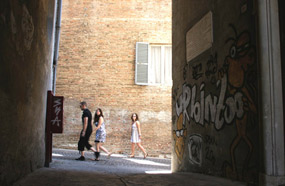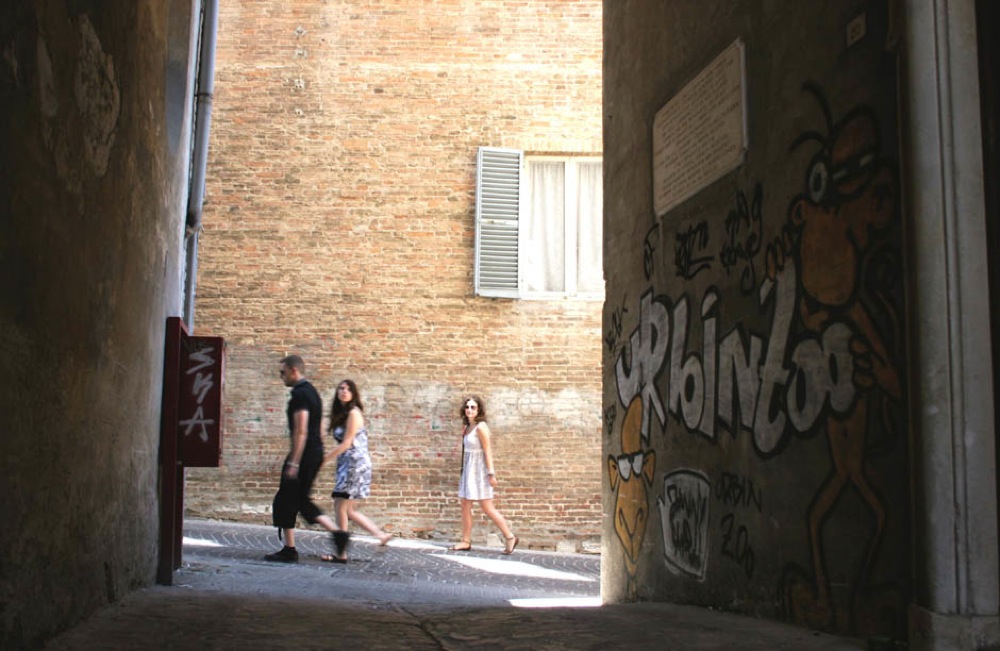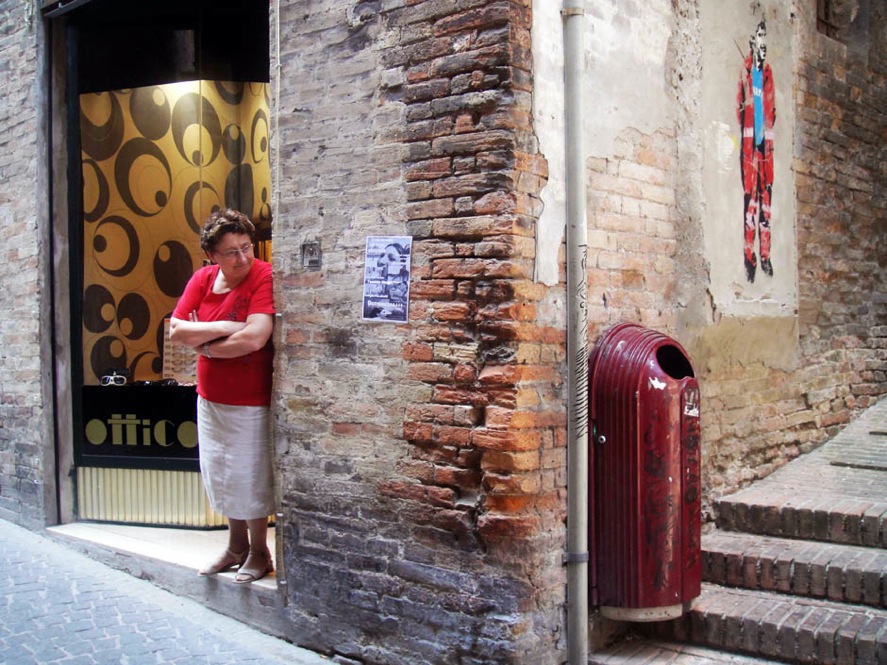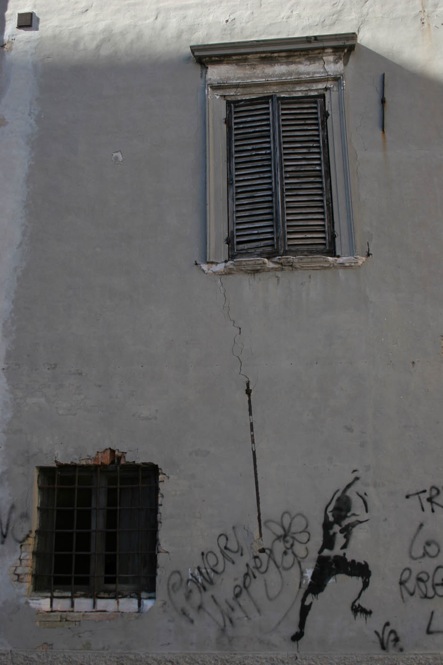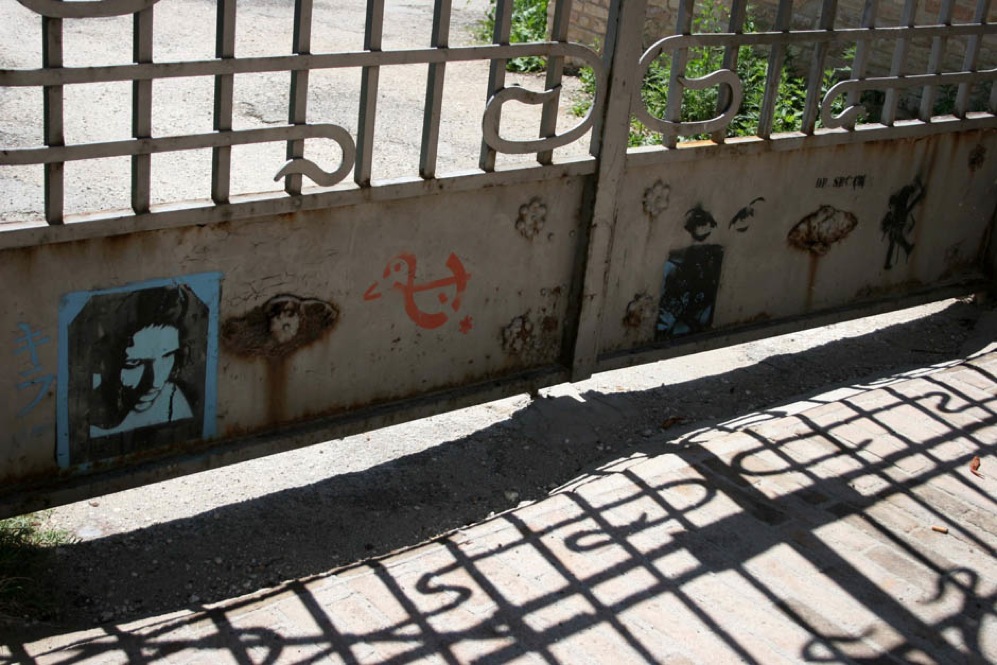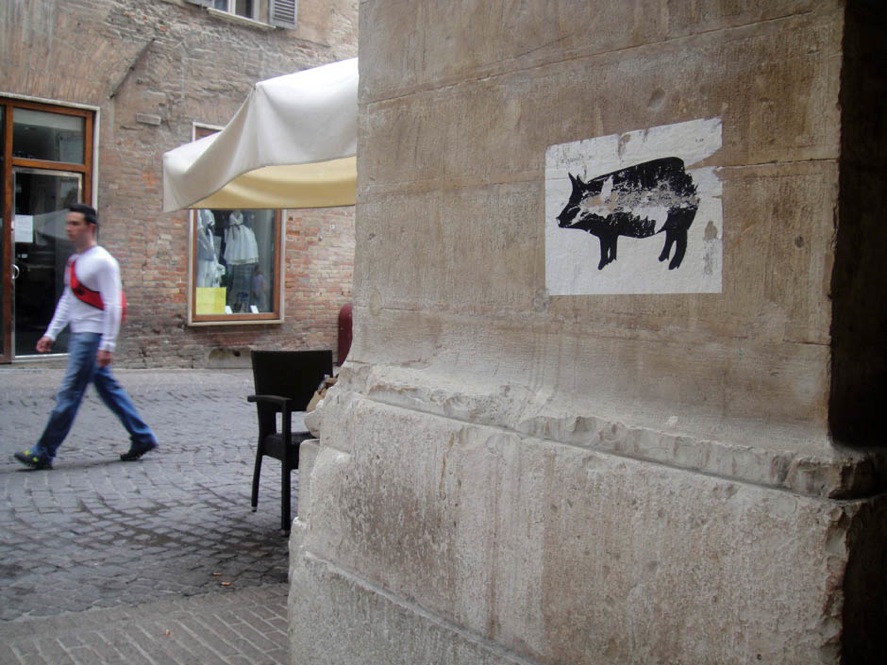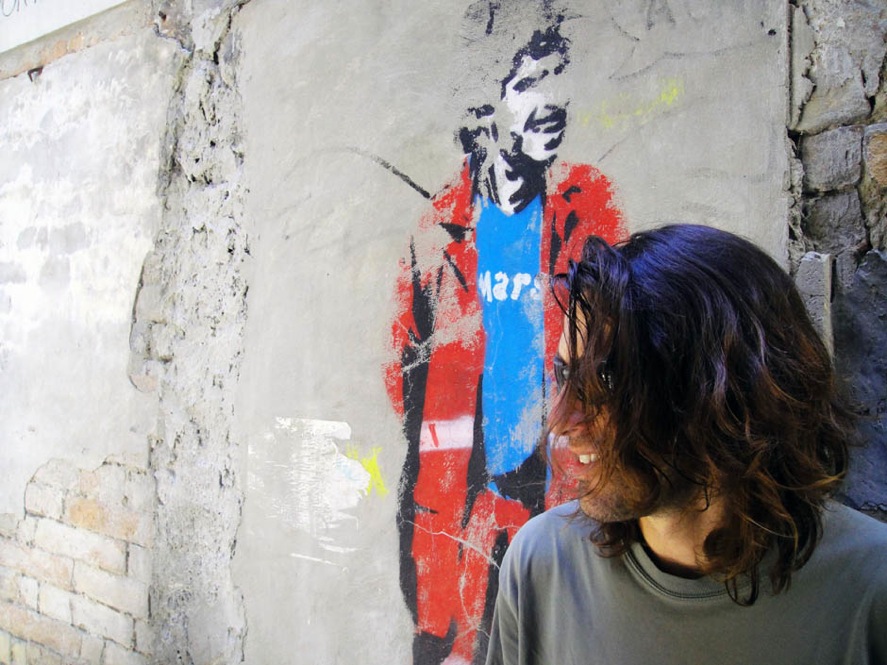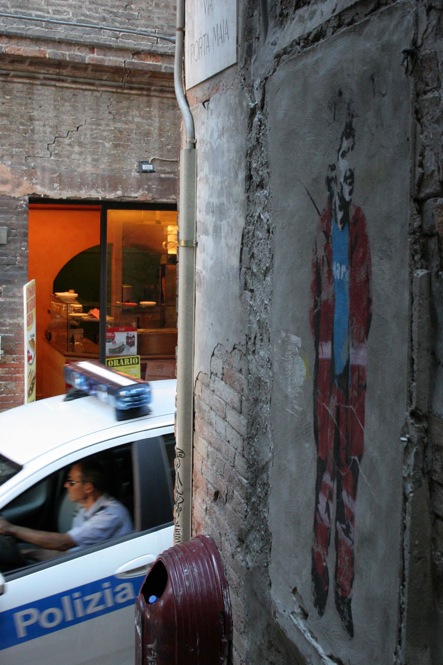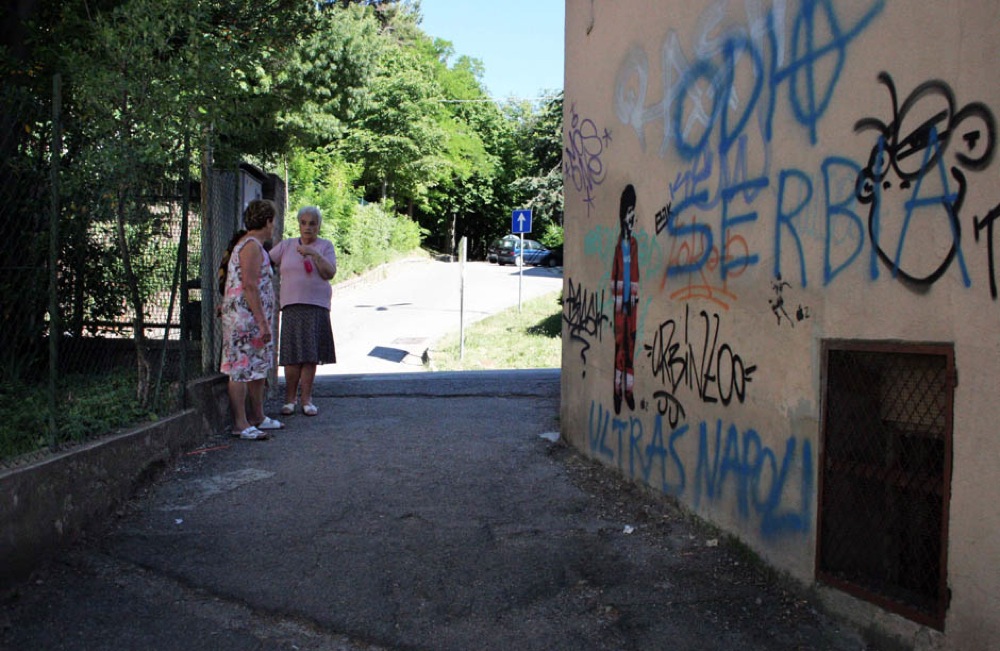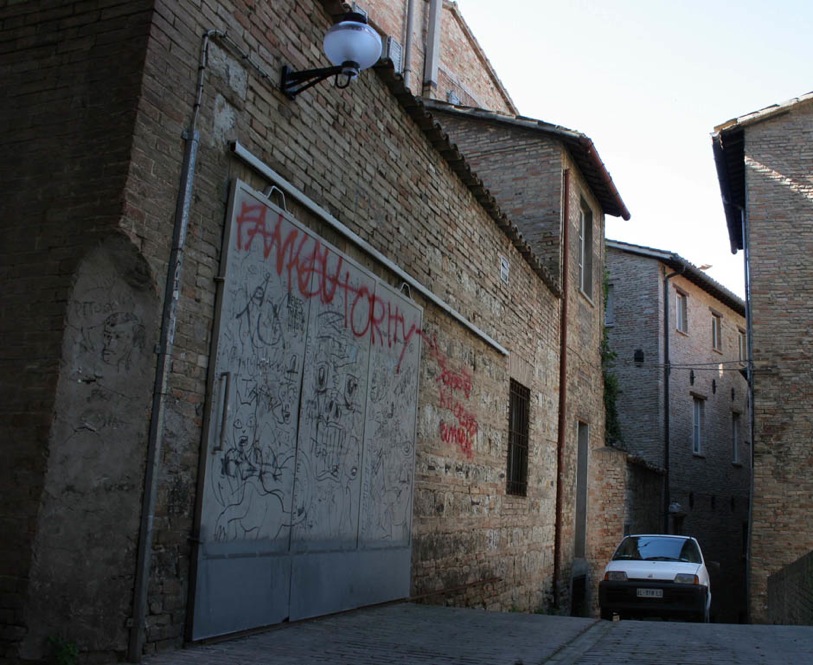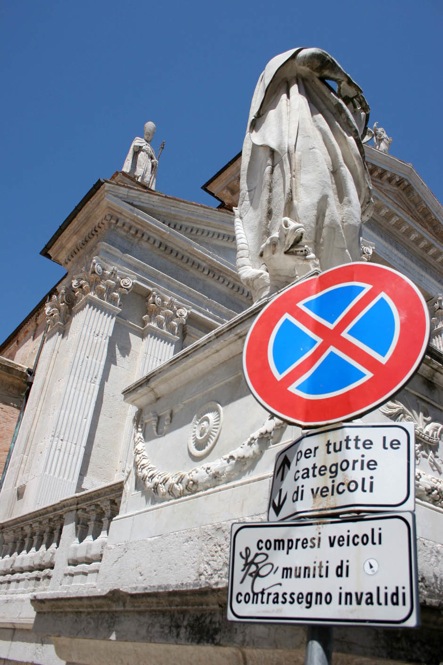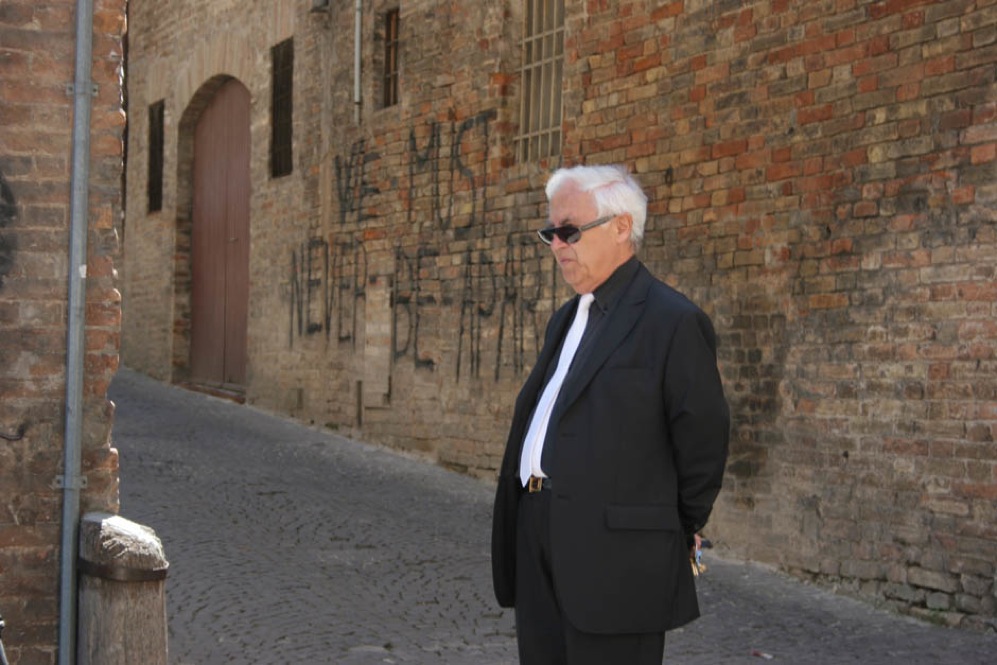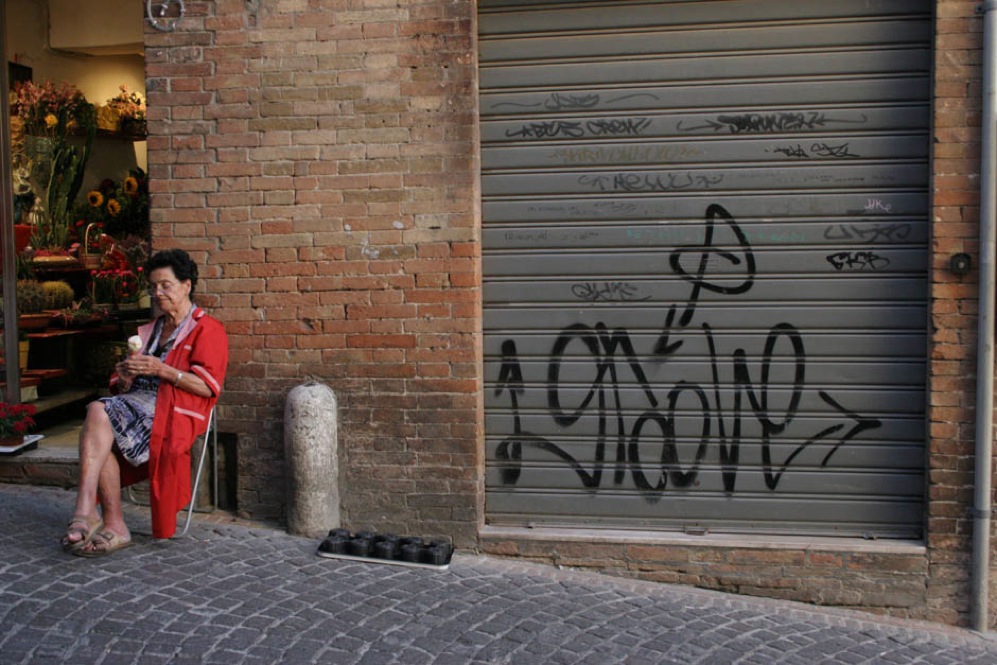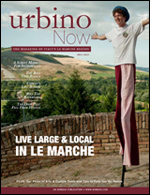When modern art meets the Renaissance in Urbino, Italy, it’s difficult to decide what to make of graffiti. It is vandalism, or art?
URBINO, Italy – As you walk the cobblestone streets of Urbino, you see stories everywhere, in the historic buildings, in marble sculpture – and in the graffiti.
Even the birthplace of 16th century Renaissance painter Raphael Sanzio has been marked by the aerosol paint better know in the streets of big modern cities like Los Angeles, New York and Milan.
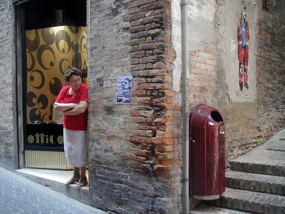
An Urbino resident poses beside one of the city’s best known art pieces next to Raphael’s Madonna Col Bambino.
Although these illicit icons of the spray can are a lot less evident here, art students and locals take notice, and differ on whether it’s art of vandalism.
Michele Fosella, 27, is a graphic design major at the Industrial Art Institute in Urbino (ISIA), who believes that without graffiti, the city would lack character.
“Every city needs this type of intervention because cities are meant to change and evolve,” Fosella says.
Although unwelcome in an ancient environment that thrives off of art tours, graffiti has deep European roots. Earliest examples date back to Ancient Greece and the Roman Empire, where the Latin term “graffito” describes an image or lettering scratched, painted or marked on property.
One of the most significant pieces in Urbino is of Argentina’s soccer player Diego Armando Maradona, posing with a smug smile and his number 10 jersey. A symbol of Naples, the team he played with for seven years, and a controversial figure in Italy due to failed drug tests that led to his expulsion from the 1994 World Cup in the United States.
The Maradona originally garnished three walls in Urbino, beginning in October 2006 on Via Porta Maia, a small boulevard leading to the home of a man known as his James Bond-inspired alias, “The Real Mister Q.”
In July 2010, Mayor Franco Corbucci had city officials conceal the image with a thin layer of plaster. On a late evening a month later, Mr. Q removed the plaster with warm water and a rough sponge, his friends across the street watching for police.
“People fear new things,” says Mr. Q, a chemistry major at the University of Urbino. Mr. Q asked that his identity not be disclosed because of his illegal salvaging of that Maradona graffiti. Residents didn’t see its “fresh and shiny” beauty, he says, “because it was on a clean wall.”
Mr. Q says that images like the Maradona “do not express rebellion, yet inspire people to think.”
Not every resident in Urbino appreciates ideas shared on walls. Stefania Bigarini, 42, a shopkeeper at an electronics store, considers the second Maradona a site of vandalism where it stands on the wall of her property. It is beside a small, secluded sidewalk residents call La Scaletta.
“I have seen it off of Via Rafaello and it is a great image, but not where it has been placed,” Bigarini says. She says she rarely sees tourists taking photos of it, as they do of the first Maradona.
It is illegal to paint graffiti in Italy on private and public property. In Urbino, the state allows a perpetrator who is caught the decision to remove the graffiti with support from personal funding, or to pay a bill for removal by city authorities.
In 2008, Italian Prime Minster Silvio Berlusconi proposed to strengthen laws against graffiti. Fines were raised more than 10-fold, to €30,000, plus prison sentences of 40 days, for defacing historic monuments and private property.
This is my private property and I work hard to keep everything clean.
“This is my private property and I work hard to keep everything clean,” says Bigarini, who supports the stricter graffiti laws.
The art students of Urbino tend to have a different perspective. Jacopo Pietroni, an art history major at Beni Culturali, supports graffiti if it does not degrade ancient scenery.
“If the art is a form of expression from youth culture, graffiti should be done as long as it does not spoil the city,” Pietroni said through an interpreter.
In a way, graffiti pieces like the Maradona have become a part of the city. Tourists from around the world photograph the image of the soccer star dressed in Super Mario red and blue, an image Mr. Q says has become one of the most tagged with Urbino on Flickr, a photo sharing website.
“Urbino is so small and the artist was strategic in his decision,” he says of its magnetism. “People from over 30 countries have photographed the Maradona.”
The third Maradona stencil can no longer be seen, covered in grey plaster and replaced with simple black graffiti tags on a large wall behind a bar on Via San Domenico.
Accademia di Belle Arti student Elena Bartolucci, 20, labels graffiti as “beautiful” when it does not offend or express vulgarity in its imagery.
“It would be nice to have a designated area in Urbino, rather than having someone you don’t know paint your house,” Bartolucci says through an interpreter. “As long as the graffiti is not painted on the Palazzo Ducale, it’s okay.”
Bartolucci believes that everything is potentially artistic if it improves aspects of life.
“At the end of the day, in regards to artistic expression, Raffaello and graffiti are all the same,” she says. “Being in a city of art, it is inevitable.”
Slideshow
Click on Image to Show in Lightbox.
